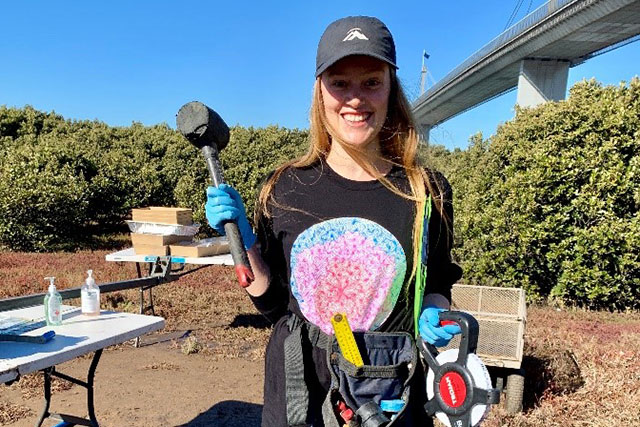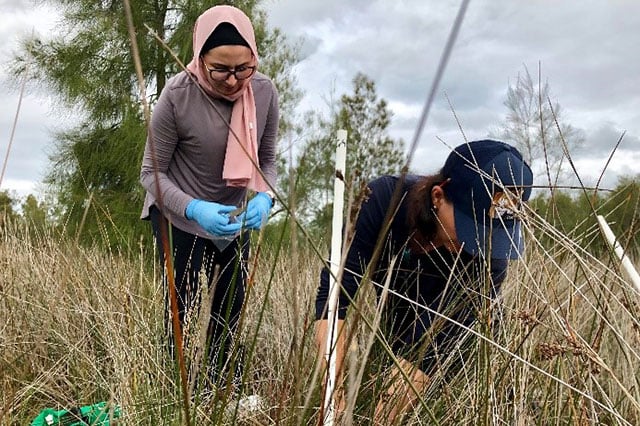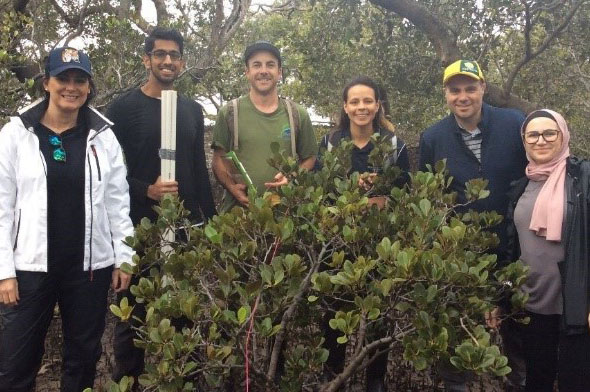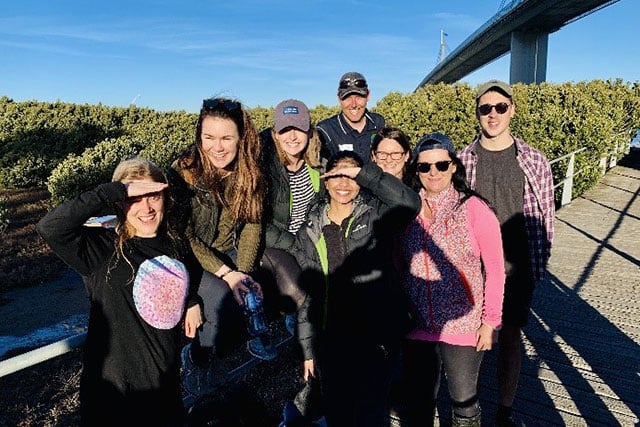Swapping suits for gumboots and laptops for lab coats
Aquatic ecosystems, such as mangroves, are among the planet's most efficient ecosystems for sequestering carbon. Scientists from Deakin University are currently researching the potential for 'blue carbon’ – the carbon captured and stored in these ecosystems – to contribute to the fight against climate change. Mangroves, for example, can absorb carbon from the atmosphere 30 to 40 times more efficiently than a forest.
A general lack of understanding about aquatic ecosystems and the immense opportunity blue carbon presents, are the two key challenges the Blue Carbon Lab Citizen Science Program seeks to address.
Thirteen of our people spent a day with scientists at sites in Melbourne and Sydney to investigate how mangrove restoration enhances carbon capture and storage.
Designed to engage and empower members of Australia's corporate community, the program gives people the chance to become citizens scientists for a day. This is where Allens got involved.
Elise's story

"The process of measuring each mangrove plant to calculate the amount of carbon gave me a new appreciation for the thoroughness and labour intensive nature of scientific work."
Elise Rutherfurd
We caught up with Elise Rutherfurd, Associate in our Projects & Development team in Melbourne, to ask about her day in the field.
'I felt like a real scientist, equipped with a tool belt of tape measures, a clipboard, sampling materials and pliers. Our data collection tasks involved taking core samples, counting seedlings and pneumatophores (mangrove breathing tubes) and measuring the dimensions of mangrove trees. This process took 2-3 hours, causing us to begin to experience the symptoms of 'mangrove madness'.
'In the Environment and Planning team at Allens, we have recently been working on a number of native vegetation offset matters. The process of measuring each mangrove plant to calculate the amount of carbon gave me a new appreciation for the thoroughness and labour intensive nature of scientific work. I also have a much better understanding of the data supporting an offset project and a newfound appreciation for all the hard work mangroves are doing to trap carbon and fight climate change,' said Elise.
Mona's story

Mona Abu Zalaf and Allens Associate Rae Mozejko
We also spoke to Graduate Lawyer Mona Abu Zalaf, who undertook fieldwork at the Towra Point site in New South Wales.
What did you learn?
'This experience turned my attention to something I had overlooked about climate change. Although we focus on reducing our emissions, we can forget the other half of the problem – that tons of carbon, already released into the atmosphere, is literally just 'sitting' there. Luckily the blue carbon found in our wetlands can trap carbon for years and years.
'So next time you spot a wetland, take a moment to appreciate the carbon being stored away for millennia and the protection this amazing ecosystem is offering our coast from natural disasters.'
Allens is certified carbon neutral in line with the National Carbon Offset Standard. We measure and reduce our emissions and source high quality carbon offsets in partnership with the Qantas Future Planet program.

Mona Abu Zalaf (far right) at Towra Point, New South Wales

Elise Rutherfurd and the Allens volunteers





